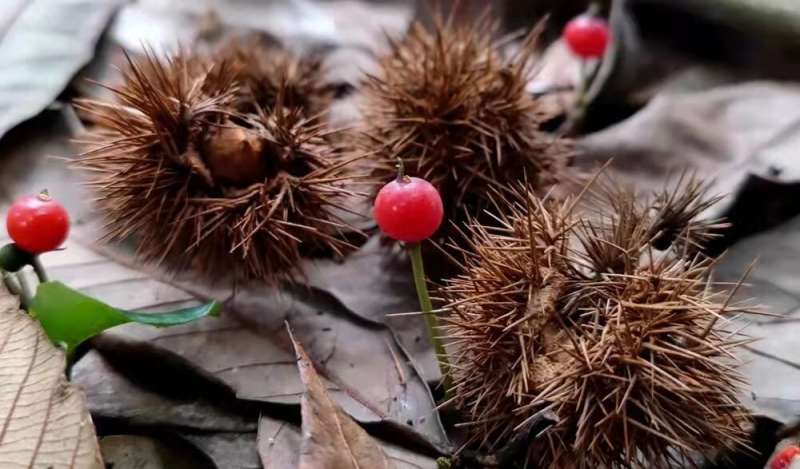Fleshy fruits are more common in tropics: Phylogenic analysis

Fruits can be dichotomously classified as fleshy or dry. Although many factors have been proposed to explain the pattern that the fleshy-fruited species occur with deceasing latitude and altitude, the relative importance of these factors has not yet been resolved.
In a recent study published in Ecology, researchers from the Xishuangbanna Tropical Botanical Garden (XTBG) of the Chinese Academy of Sciences and their collaborators investigated factors affecting fruit type (fleshy vs. dry): plant growth form, environmental constraints (summarized by climate region), and phylogenetic conservatism.
In the study, the researchers used a dataset of 9,370 seed plants belonging to 1,860 genera and 212 families. Fruit type (fleshy vs. dry) and plant growth form (woody vs. herbaceous) data were collected from published floras. Fruits were classified as fleshy by whether having visually fleshy pericarps or appendages when mature, otherwise, were dry ones.
Of the 9,370 species, 2,635 species produced fleshy fruits. Fruit type had a very strong phylogenetic signal. Temperate flora contained a lower proportion of fleshy-fruited species than both tropical flora) and subtropical floras. Woody species contained a higher proportion of fleshy-fruited species than herbaceous species.
They further found that phylogenetic conservatism explained the vast majority of fruit type variation among floras, while climate region and growth form explained little variation.
To investigate the lack of explanatory power of growth form and climate region on fruit type in more detail, the researchers analyzed the phylogenetic conservatism for each trait separately. Both fruit type and plant growth form had very strong phylogenetic signal. The phylogenetic conservatism occurred both towards the base of the phylogeny and also towards the tip. In contrast to growth form, the climate region in which species occur does not show strong conservatism.
"Our results suggest that methods using the full phylogeny rather than earlier methods give a more informative tool to explore the phylogenetic patterns of functional traits," said Wang Gang of XTBG.
More information: Gang Wang et al, Phylogenetic conservatism explains why plants are more likely to produce fleshy fruits in the tropics, Ecology (2021). DOI: 10.1002/ecy.3555
Journal information: Ecology
Provided by Chinese Academy of Sciences





















